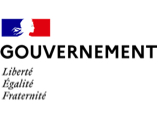Digital healthcare in Italy
Key figures
59 M
inhabitants
8.67% of GDP
destined for the healthcare sector in 2019
125
ASL (local health agencies)
Italy's healthcare system is based on the universalist model, providing all its citizens with an essential level of assistance (LEA).
The National Health System - SSN (Servizio Sanitario Nazionale), is financed by public sources from taxation. It provides healthcare services to the entire population. The Ministry of Health sets health policy and the direction of the NHS.
Decentralization plays a major role through the 125 ASLs - (Azienda Sanitaria Locale).The regions set health policy guidelines and are fully autonomous in the organization and management of their regional systems. They are required to provide a basic basket of care free of charge to all citizens, known as the essential level of assistance - LEA (Livelli essenziali di assistanceenza).
Progressive development of digital healthcare thanks to the Next Generation Italy plan
Thanks to the 2021 recovery and resilience plan by the European Union, Italy has seen an acceleration in the digitization of its healthcare system. The deployment of e-prescriptions, the digital covid certificate, the development of telemedicine and electronic health records are the major innovations of the last three years. Thanks to the Next Generation Italy plan, 15.6 billion euros are being invested in digitization and the development and deployment of healthcare innovations within the NHS.
How do you enter the Italian digital health market?
1. Obtain authorization to enter the Italian market from the General Directorate for Medical Devices and Pharmaceutical Services
The Directorate General for Medical Devices and Pharmaceutical Services (Dirección generale dei dispositivi medici e del servizio farmaceutico) is part of the Ministry of Health. Once the manufacturer has submitted its application by dossier to the Directorate and the device already has CE marking, it can receive authorization to enter the Italian market. This institution is also responsible for the general regulation of pharmaceutical activities in relation to the Italian Medicines Agency - AIFA (Agenzia Italiana del Farmaco).
If the manufacturer is established outside the European Union, the medical device must be registered in the Ministry of Health database. Specific online forms must be completed to fill in all data relating to the operation of the medical device.
In Italy, medical and non-medical solutions for organizing care (such as clinical records, personal medical records, etc.) follow the same rules as other medical devices .
2. Submit a medico-economic evaluation file to the Agence nationale des services de santé régionaux (AGENAS).
The Agence nationale des services régionaux de santé - Agenzia nazionale per i servizi sanitari regionali (AGENAS) is the body responsible for monitoring and surveillance of a medical device, once it has entered the Italian market. This technical and scientific structure of the National Health Service is responsible for the medico-economic evaluation of medical devices ((Health Technology Assessment - HTA). It guarantees the quality and efficiency of healthcare and works with Italy's 20 regions to promote the adoption
3. Register the digital device in the national classification of medical devices
The national classification system for medical devices, called Classificazione Nazionale dei Dispositivi medici (CND) lists the devices present on the Italian market. It is sorted alphabetically, and each letter corresponds to a medical device category. For example, telemedicine solutions are now in category z.
4. Obtain SSN reimbursement for digital DM
If the device receives authorization for use as part of services authorized by the NHS, this service may be reimbursed, with possible differences between regions related to the type of service. Reimbursement for the provision of healthcare services is based on diagnosis-related groups (DRG).
Government authorities and platforms
They are the guarantors of smooth operation and cooperation in the healthcare system
.The associations
They bring companies together and facilitate their incubation
.Support and innovation initiatives
They bring together and facilitate the incubation of new technologies
.Training
Universities and their groups that train and support digital health innovations
Exporting internationally - Set course for Italy!
Webinar replay


